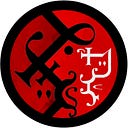[Dis] Coins of the Holy Infernal Empire
The monetary system of the Holy Infernal Empire was implemented in the I century after the Accord when most of the Archdevils were still alive, and it was conceived to mirror the cosmic order they wanted to restore.
For this reason, the relationship between the coins reflects that of the part of the year.
The gold coin represents the year. Its size and weight are standardized in all the Empire and the coinage it’s supervised by the archbishop of the city hosting the mint, acting with Imperial authority.
The other coins are minted autonomously by the local princes. The weight and size are similar among the various imperial nations: tavern and common vendors won’t mind taking “foreigner” silver pieces but, for bigger businesses, money changers are needed.
The electrum coin is made of a mix of gold and silver and it represents the season: a gold coin is worth four electrum coins. This type of coin is in disuse in almost all the empire and a lot of people won’t accept it, unable to estimate its authenticity. It remains popular only in Dis and Nessus.
The silver coin represents the month. A gold coin is worth 12 pieces of silver and an electrum coin is worth 3. The silver coin is the metric of value for everything since is more common than gold coins. Silver coins have taken different shapes in space and time: a way for the rulers to mark their rule in a subdue but everpresent way.
The bronze coin represents the weeks. This kind of coin is fallen out of fashion but it is still in use. Coin commemorating events like princely marriages, death, or birth are usually bronze. Since their value is one-fourth of a silver they are commonly called quarters.
The copper coin represents the Day and it’s the most common coin. This coin breaks the symmetry with the calendar: in a month there are two days counted as outside the 4 weeks of seven days (the first and the one in the middle), for a total of 30. So, in theory, a copper piece should be 1/7 of a bronze, but 1/30 of a silver. The value has been rounded up to 1/8 and 1/32 respectively.
Alongside this regular coin, there is the lingots coin. This coin has not had a fixed value but acts as a promissory note: a bank emits it to certify a deposit that can then be withdrawn in other offices of the bank. This is a way for a traveler to have a big sum of money at their destination without having to carry them. The value of a lingot is etched in metal and can be any number, the only limit of the disponibility of the banks. To grant authenticity, the lingot is made in an alloy of gold and other metals, which only other people of the same bank know the composition of and are therefore able to identify true magical or mundane means. With the increase in magic users, it has become common to cover the “coin part” of the lingot with a wax seal. The seal is not made of actual wax but of a mix of shellac, turpentine, and Elemental Dust. The dust, thanks to its mana-absorbing proprieties, bears any sign of magical manipulation. It isn’t clear if this “magic detecting” wax seal is effective or if the banks spread these rumors to scare magic forgers off.
